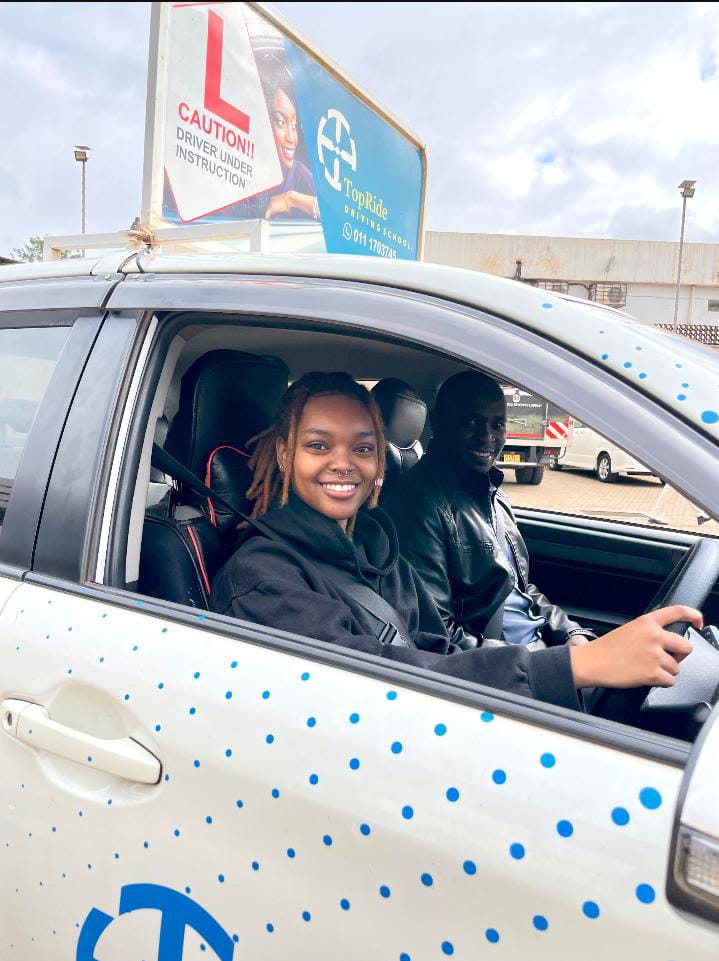Understanding Defensive Driving
In today’s fast-paced world and especially in Nairobi, the roads can be unpredictable. Whether you’re a new driver or a seasoned veteran, one thing remains constant: the importance of safety behind the wheel. Defensive driving is a crucial skill that every motorist should master. But what exactly is defensive driving, and why is it so important? At TopRide Driving School, located in Lavington Nairobi and Nextgen Mall, we believe that understanding and practicing defensive driving can make the difference between a safe journey and a dangerous situation. Here’s what you need to know.
Defensive driving is a set of driving skills and techniques that go beyond simply knowing the rules of the road. It involves being proactive, rather than reactive, anticipating potential hazards, and taking steps to avoid accidents before they occur. The core idea behind defensive driving is to stay aware, prepared, and in control, regardless of the behavior of other drivers or the conditions of the road.

Key Principles of Defensive Driving
1. Stay Alert and Focused
The foundation of defensive driving is maintaining constant awareness of your surroundings. This means keeping your attention on the road, avoiding distractions like mobile phones, and being mindful of what’s happening around you. Defensive drivers are always scanning the road ahead, checking their mirrors, and being aware of other vehicles, pedestrians, and potential hazards.
2. Expect the Unexpected
Defensive driving teaches you to anticipate potential dangers before they happen. This might mean keeping an eye on vehicles that are swerving or braking suddenly, watching for pedestrians who might step into the road, or being prepared for sudden changes in traffic flow. By expecting the unexpected, you can react more quickly and effectively to avoid accidents.
3. Maintain a Safe Following Distance
One of the most important defensive driving techniques is maintaining a safe following distance from the vehicle in front of you. This gives you enough time to react if the car ahead stops suddenly. A good rule of thumb is the “three-second rule”: choose a fixed point on the road, and when the vehicle in front of you passes it, make sure it takes at least three seconds before you pass the same point.
4. Obey Traffic Rules and Regulations
Defensive driving also involves strictly adhering to traffic rules and regulations. This includes obeying speed limits, stopping at red lights and stop signs, yielding the right of way, and using turn signals. Following the rules not only keeps you safe but also helps create a predictable and orderly flow of traffic, reducing the likelihood of accidents.
5. Be Courteous and Patient
Aggressive driving behaviors, such as tailgating, speeding, and weaving through traffic, increase the risk of accidents. Defensive driving promotes a calm, patient, and courteous attitude on the road. This means allowing other drivers to merge, not engaging with aggressive drivers, and staying calm in stressful situations.
6. Adapt to Road Conditions
Road conditions can change rapidly due to weather, construction, or traffic patterns. Defensive drivers adjust their driving to suit the conditions—this might mean slowing down in the rain, increasing following distance on a slippery road, or being extra cautious when driving through a construction zone. Adapting to the conditions helps ensure that you maintain control of your vehicle at all times.
The Benefits of Defensive Driving
• Reduced Risk of Accidents:
The primary benefit of defensive driving is a reduced risk of accidents. By staying alert, anticipating hazards, and maintaining control, defensive drivers are less likely to be involved in collisions.
• Lower Insurance Premiums:
Many insurance companies offer discounts to drivers who complete defensive driving courses.This is because defensive drivers are statistically less likely to file claims, making them a lower risk for insurers.
• Better Fuel Efficiency:
Defensive driving techniques, such as smooth acceleration and braking, can also lead to better fuel efficiency, saving you money at the pump.
• Increased Confidence:
By mastering defensive driving skills, you’ll become a more confident driver. You’ll be better equipped to handle unexpected situations and make quick, safe decisions on the road.
Learning Defensive Driving at TopRide Driving School
At TopRide Driving School, we emphasize the importance of defensive driving in all our courses. Whether you’re a beginner or looking to refresh your skills, our experienced instructors will teach you the techniques you need to stay safe on the road. Our courses cover everything from basic defensive driving principles to advanced maneuvers, ensuring that you’re prepared for any situation you might encounter.

Conclusion
Defensive driving is more than just a set of skills—it’s a mindset that prioritizes safety, awareness, and responsibility on the road.
By practicing defensive driving, you not only protect yourself but also contribute to the safety of everyone around you.
At TopRide Driving School, we’re committed to helping drivers develop these essential skills. Remember, the best drivers aren’t just those who know how to drive—they’re the ones who know how to drive safely.
Sign up for our defensive driving course today and take the first step towards becoming a safer, more confident driver.

